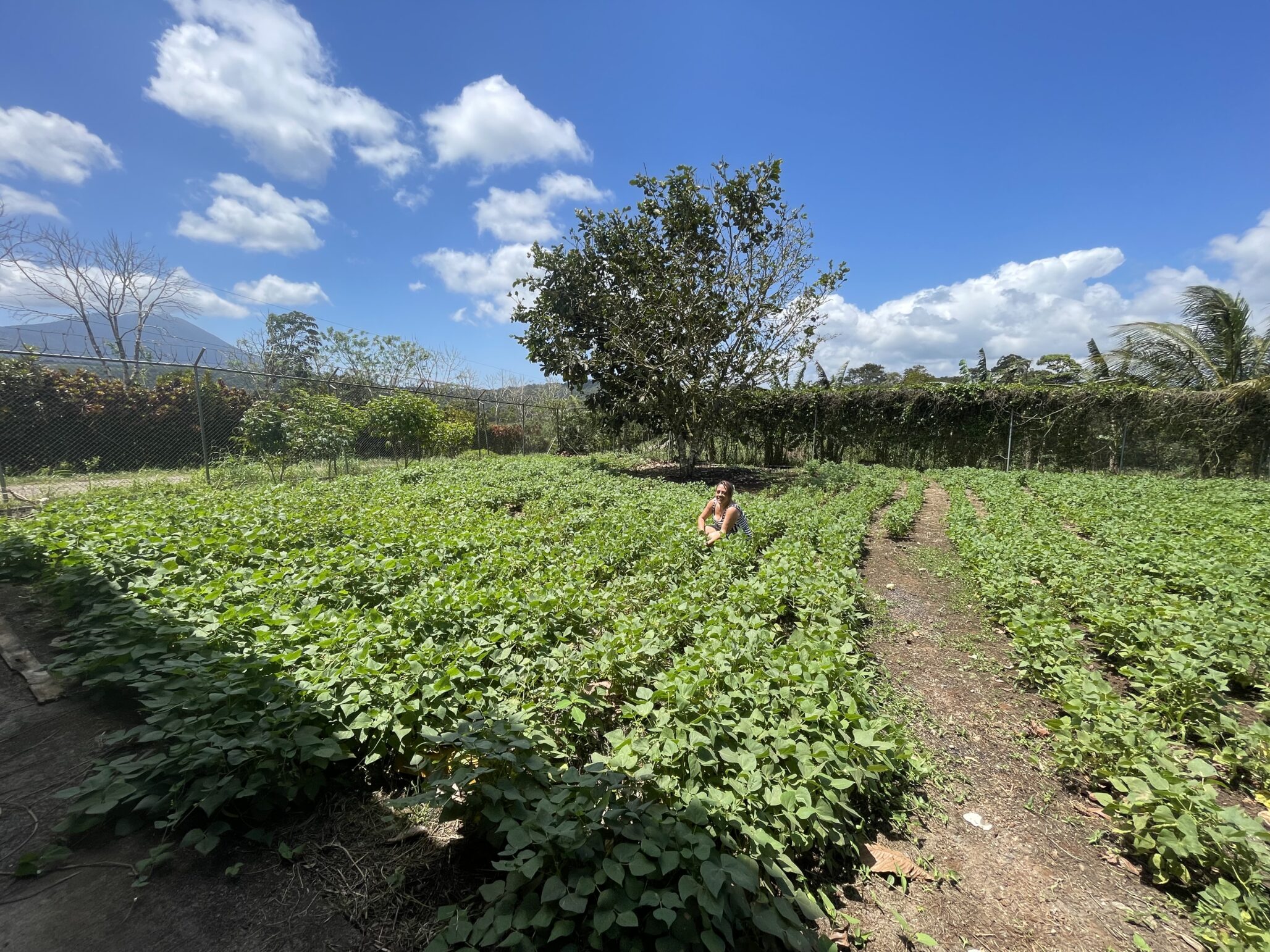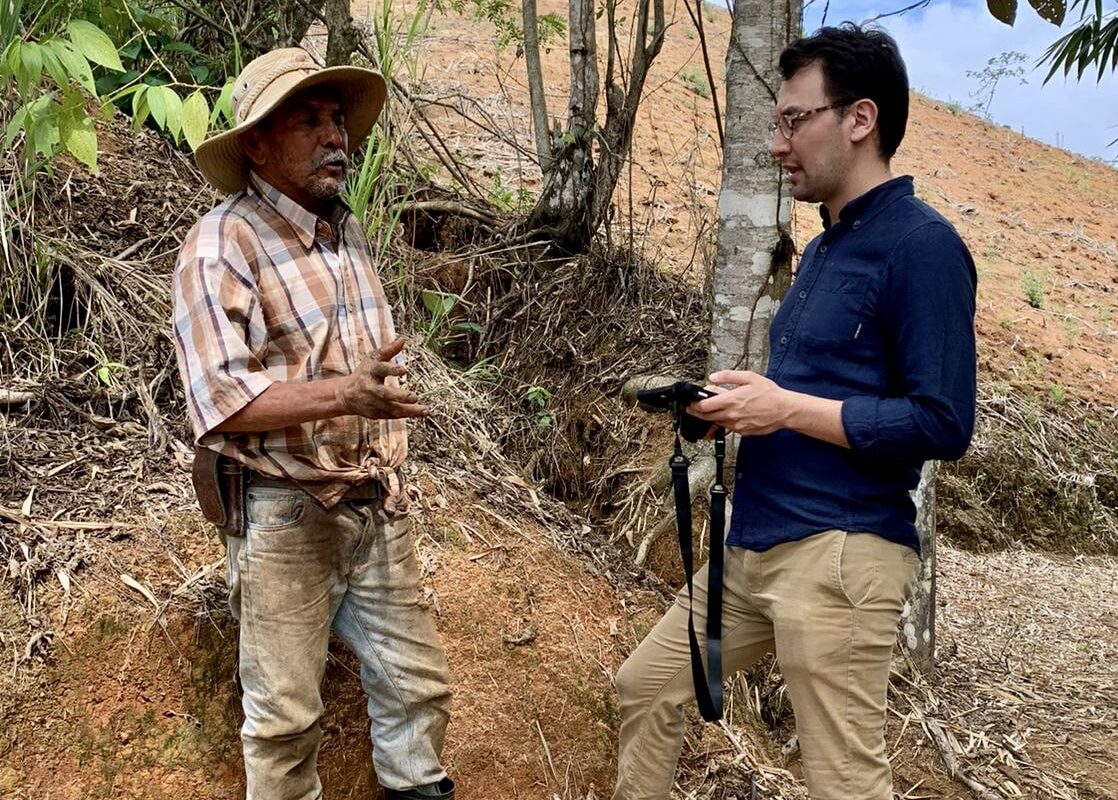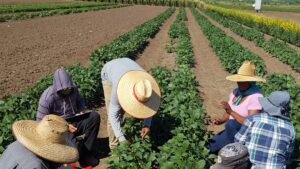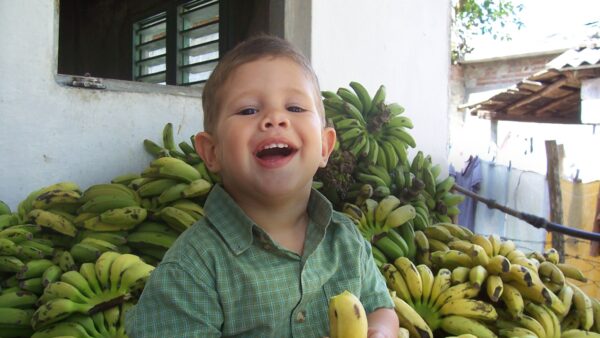Citizen science and the power of three combine to increase food security in the global south.
Collaboration between scientists and farmers is always important in crop variety studies. That partnership is getting a boost thanks to a new kind of citizen science. Called the Triadic Comparison of Technology Options (tricot) approach, this simple but extremely practical and impressively effective strategy involves researchers providing seeds to a large number of farmers, who then plant the seeds, collect the production data, and report their observations back to the scientists. Initially developed with an eye on the global south, this approach enables thousands of farmers to participate in providing data in — and gain from the results of —inclusive, practical, very large-scale, real-world trials.
While conventional trial data, generally conducted by scientists themselves in a limited number of locations and a relatively low total number of plots, can be the most scientifically rigorous, the resulting data is very specific to each trial’s growing area and the unique growing conditions of the study year(s). Geography, microclimates, weather events, regional or individual agronomy preferences, even taste preferences can mean what works in one location might not meet the needs of a farmer 100km away, or even just down the road. Local, practical, efficient trials are more important than ever, given quickly changing climatic conditions.
For all these reasons, Jacob van Etten, principal scientist and director of digital inclusion at the Alliance of Bioversity International and CIAT, realised citizen science — and specifically, the tricot approach — just might be the answer.
Leveraging Farmers’ Skill
Citizen science is a method of using members of the general public (in this case, farmers) to collect or analyze data, usually in collaboration with professional scientists. This allows for high numbers of trials across a wide range of locations. Personal connection to the subject of the study is a strong motivator for people to actively participate. Van Etten realized farmers’ interest in access to newer, better crop varieties could be leveraged to enhance crop trialling in multiple parts of South America, Africa and Asia.
In standard field trials, scientists may have a lot of control, but there is low motivation for the farmers to do their part in maintaining the test plots. Scientists need to be on location to observe results, which becomes expensive. In addition to (and in part because of) better ongoing maintenance, Van Etten says that citizen science data is about half the cost of a data point from a normal trial.
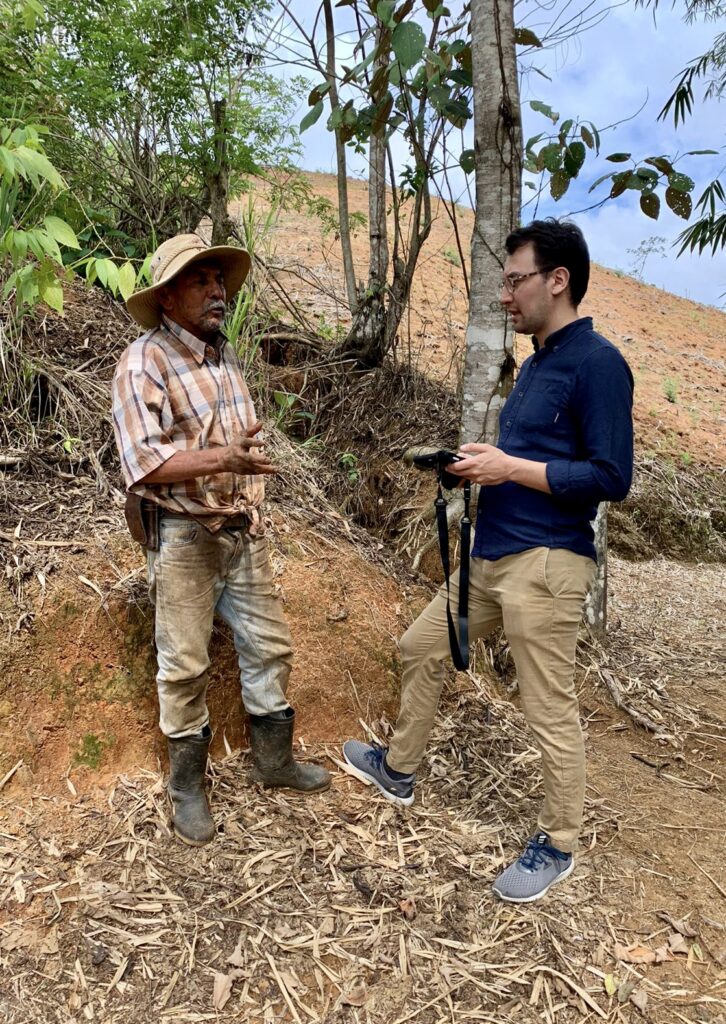
“You don’t need to be there,” van Etten says. “You can call the farmer and get a lot of data in a very short period without driving around.”
While optimal management, reproducible trials at research stations are still important, citizen science results in diverse conditions. Rather than being a negative, that diversity can be a welcome benefit.
“Climate change is real,” says Stephen Angudubo, the on-farm trial network coordinator with Alliance Bioversity – CIAT. “In Uganda, the intensity of its effects is varied across regions. Some closer to South Sudan, Ethiopia and Kenya are arid and face more of the adverse effects of climate change.”
As such, localized trials are critical.
The wetter areas can face challenges, too, as excessive rain can result in the rotting of crops. Finding varieties that allow for resilience through these and other challenges helps increase food security.
“We want to look at this diversity and how (the varieties) work when you apply it in practice,” van Etten says. “We’re not breeding for the station. We’re breeding for real farming systems.”
“With [conventional] on-farm testing approaches, there might be six groups across the nation and each group might have 20-30 trials,” Angudubo adds. “With the tricot approach, we have hundreds of farmers evaluating these in smaller gardens, which are manageable by the farmer. They evaluate these varieties throughout the growing season up to harvest.”
The Power of Three
Consistency is a challenge with citizen science data collection. Direct measurements may be taken accurately, but collecting qualitative data requires training and usually results in errors. To avoid this, van Etten turned to ranking.
“Ranking is a robust way of converting an observation into something that can be analyzed statistically,” he explains.
For the tricot trials, farmers across a range of locations are given three seed varieties to grow on their land. They then report their preferences and observations of any variables the researchers want to examine using a very simple three option ranking system. Why three? Results are simply a ranking of first, second, or third, usually by using easily qualified terms like ‘best’, ‘mid’, ‘worst’, or ‘tallest’, ‘mid’, ‘shortest’. Van Etten says while nearly anyone can efficiently rank using a three-choice system, adding a fourth choice immediately adds a level of difficulty and confusion that hinders results and sometimes makes reporting impossible.
The tricot approach also allows for inclusion of smaller farmers in the research process. This is critical in regions where a vast majority of farmland is managed by small subsistence farmers.
“The bigger the plots, the more you exclude farmers who have small farms and small plots,” van Etten says. “Frequently that’s women but it also excludes any poor households.”
The tricot approach is used beyond harvest as well. The product is taken to the kitchen and tested for how well it cooks or converts to flour and flour products. Regional preferences for colour, taste and texture can all be assessed when deciding if a variety suits a particular growing region. Researchers can get input from all family members who interact with the crop from seed to table, allowing information to be gathered on how gender or task division affects variety preference.
Participating farmers are encouraged to share their favourite varieties with others. In most cases, adding these new varieties to a community’s farming ‘toolkit’ results in increased yields, which means increased food security and additional income for farmers who sell rather than consuming all of their product. Together, these result not only in economic and social benefit, but genuine excitement.
The tricot approach can be used at the end of a breeding program (late-stage testing) to have end users test varieties and aid in the approval process for release. It can also be used for the promotion of seeds in already released crop varieties to assess their suitability for specific regions.
Tricot in Action in Ethiopia
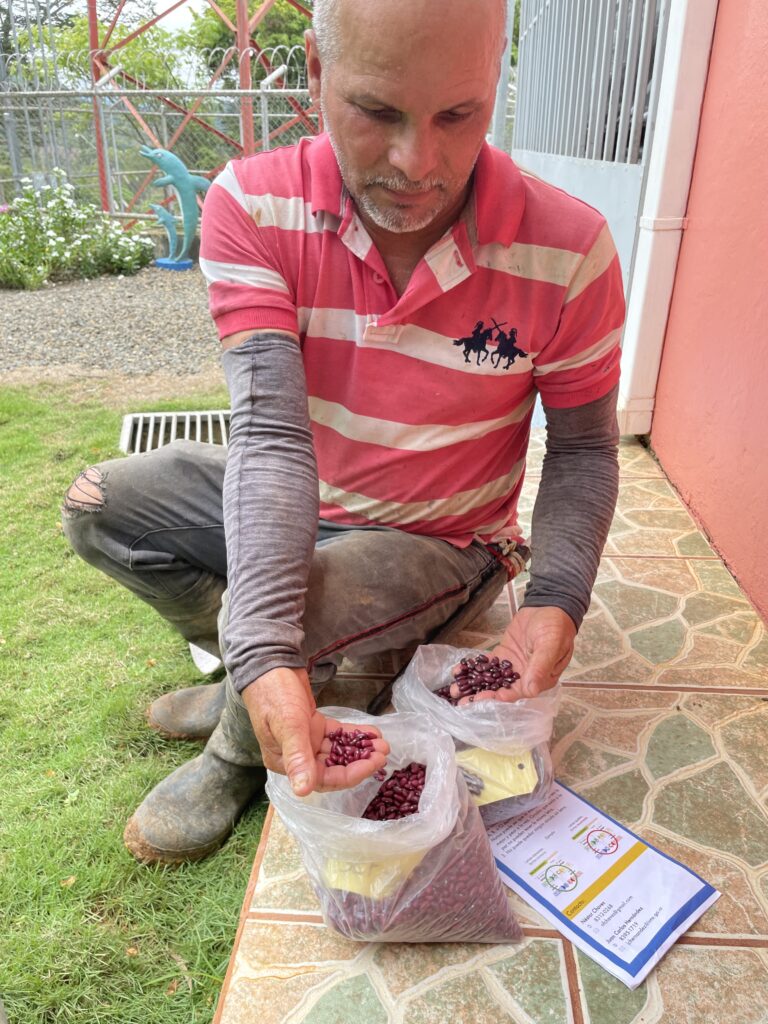
Gareth Borman, a Seed System Advisor at Wageningen University, focuses on seed systems development in low- and middle-income countries. He explained that professionally developed seeds don’t always make it to the commercial sector due to the biology of the crop, economics or legislation.
“These were developed through professional breeding programs with the intention to either increase productivity or resistance to certain abiotic and biotic stresses,” Borman says. “Without a profit-making mechanism to deploy these varieties, and [given] a lack of public funding to promote them, sometimes they remain on the shelf and don’t get into the hands of farmers. That’s where seed systems work comes in.”
Borman has spent significant time exploring different mechanisms for getting seeds into the hands of farmers. When he discovered the tricot approach, he saw its strong potential for successfully increasing diversity in the fields.
Using the tricot approach, he ran a three-year experiment in Ethiopia to determine which varieties farmers preferred and why. Ultimately, 350 unique varieties of 20 crops were distributed three at a time to approximately 35,000 smallholder farmer participants.
The experiment was focused on deploying crop varieties already on the shelves of research institutes.
“We tried to get our hands on whatever was available,” Borman says. “The strategy was no discrimination against crops or varieties — if it’s out there, let’s just take it.”
Within the formal seed systems, some traits like cookability or the ability to successfully turn into usable flour aren’t sufficiently considered. On the other hand, a variety might be considered suitable for certain conditions or agroecology but assumed not a fit for elsewhere.
When selecting which varieties to give the farmers, Borman put aside such assumptions and distributed varieties outside the expected regions.
This release of assumptions also addresses climate change, since geographical recommendations for a variety may no longer be accurate. What used to be considered mid-altitude in Ethiopia might now perform best at a lower altitude, or a high-altitude might perform like a mid-altitude variety.
“On an aggregate level, (the tricot approach) was very effective at putting novelty and diversity in the fields of farmers,” Borman says. “We also saw that farmers saved and exchanged seed of the varieties that they preferred.”
Tricot in Action in Costa Rica
Sergio Puerto, a PhD candidate in Applied Economics at Cornell University, utilized the tricot approach in a slightly different way. He collaborated with the National Plant Breeding Program in Costa Rica to examine how farmers’ trait preferences influence adoption rates of new varieties of beans.
He conducted his study with 400 bean growers in two different regions of Costa Rica in 2021-2022.

“What I did in my dissertation research was to adapt tricot methodology to answer a more economic question than an agronomic one,” Puerto says. “I wanted to implement tricot to get to know farmers’ preferences and to estimate the performance and adoption of new seeds in a systematic and objective way.”
The key characteristic of the new seed was drought resistance, but during the trial period in this population, drought was not especially relevant. When breeders don’t target the characteristics farmers want, the farmers don’t adopt. This was intuitive, but there was more to the story.
“I also found that farmers who adopt the seeds that they prefer the most are more productive,” Puerto says.
“Their seed is more productive, meaning that breeders are good at creating genetic gain and creating a seed that is as profitable and productive for farmers, as long as that seed reaches the correct farmers.”
The second part of Puerto’s research was to go back after a season to offer each farmer a single new variety for purchase. One group was offered a variety they preferred in the first part of the trial. The other group was offered a recommended variety, analogous to the typical release of new seed varieties in the country.
Puerto found when farmers can adopt the variety they prefer, adoption rate was about 40% higher than when they were simply offered a recommended seed.
Van Etten expressed the importance of studying the interaction between the person and the seed, and Puerto reflected that sentiment.
“If we want breeders to know what farmers want, they need a lot more support,” Puerto says. “They are great scientists, but they are not economists, they are not social scientists.”
Where to Next?
First and foremost, the tricot approach is available to anyone wanting to use it. While the concept is simple to understand, a key factor in its success depends on the statistical method used to analyze the gathered data.
“We’ve spent 10 years on refining the methodology, the software, the statistics, and implementing new statistical software,” van Etten says.
The resulting comprehensive online platform, ClimMob, is available free for non-commercial use. This aids users with setting up a trial, gathering data and running the statistics.
The tricot approach has been adopted by breeding programs in over 20 countries in the Global South. This includes more than 30 crops spanning at least 150,000 plots.
“We do not always actively support the projects,” van Etten explains. “Some people do their own thing with the software, so these estimates are conservative.”
The tricot approach empowers farmers and researchers alike, and the positive impact on food security and farming livelihoods is already evident.


